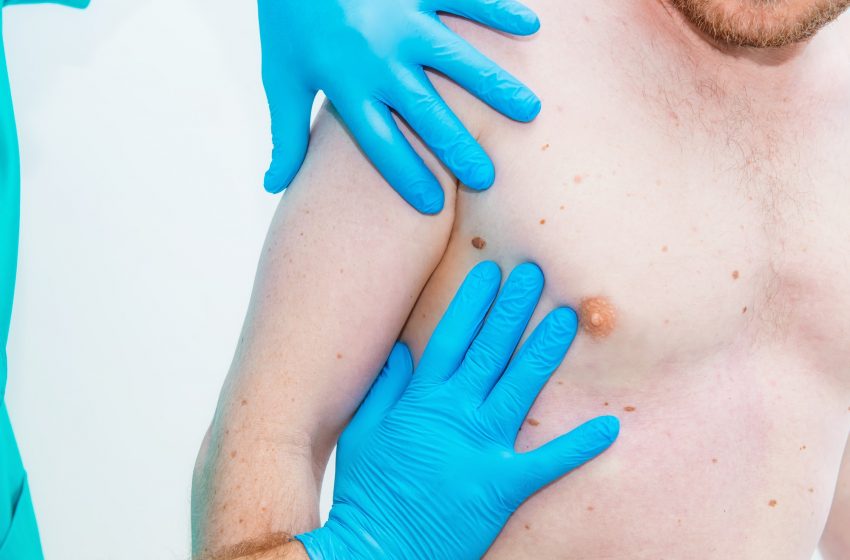
Pectoral Muscle Pain Near Armpit
You may have a serious medical condition if you feel pectoral muscle pain near armpit. Such symptoms are usually caused for concern unless it is due to injury.
If it is an injury, we will tell you how to treat it, but you should see the doctor immediately if it is something else.
You can treat some injuries at home, but others may still need an assessment from a physician. Any pectoral pain that doesn’t result from an injury could be heart-related or other underlying condition.
The pectoralis muscle joins the front of the arm to the chest. This muscle plays an important role in using the movement of the entire arm. To figure out the cause, you should compare your symptoms with those on this list of diseases.
Eliminate all that don’t match up and focus on those that do. If you have multiple results, try to minimize the list by going through the symptoms again.
If that process didn’t reap success, compare all the treatments and take note of those that are the same. Similar treatments are safe to use for your situation until you can reach a doctor or the hospital.
Here are is the list of medical conditions that can cause pectoral pain near the armpit.

Contents
Pectoral Muscle Pain Near Armpit – The Likely Causes
Angina
Angina occurs when there is less blood flowing to the heart muscle. Oxygen is vital to the body and travels through the blood; lack of oxygen could affect the heart.
Coronary artery disease can cause such heart problems by restricting blood flow. Some of these diseases are plaque build-up due to high cholesterol and hypertension.
Symptoms of angina are shortness of breath and nausea. You may experience abdominal pain and stabbing chest pain.
Other signs are a feeling of discomfort in the neck, back, and jaw.
Treatment for this condition is a variety of medications like aspirin, nitrates, statins, and beta-blockers.
Other treatment methods are calcium channel blockers, ranolazine, drugs that prevent clotting, and blood pressure drugs.
Breast Cancer
Breast cancer happens when there is a genetic mutation or DNA becomes damaged. High estrogen levels and hereditary transfer could be responsible for causing cancer.
Symptoms of breast cancer are a lump in the breast or armpit area. You may notice the breast thickens and a flaky reddish nipple.
Other signs are breast irritation and dimples appearing on the skin. If the nipple becomes painful or has a pulling sensation, that could be cancer.
Treatment for breast cancer varies on your condition but may require removal of the breast via surgery. Other treatments are hormonal therapies to help with estrogen.
Chemotherapy will be subsequent if you cut the breast after surgery to kill remaining cancer cells.
Swollen Lymph Nodes
Swollen lymph nodes can cause pectoral muscle pain near your armpit. This illness occurs when the lymphatic system is fighting infection in the body.
The infection affects the lymphatic system causing the nodes to swell. In unusual cases, it may be due to cancer.
Symptoms of swollen lymph nodes are hard lumps along the armpit, necks, and groin. These lumps are tender to the touch and painful.
You may experience a chest cold, sore throat, or runny nose with fever. Other signs are night sweats and swollen limbs.
Treatment for lymph nodes is plenty of rest and over-the-counter medication to relieve pain. You can use a warm compress on the affected areas to help with the pain.
Viruses go away on their own; the best support is a robust immune system to fight the infection. If bacteria cause the infection, antibiotics will help.
Pectoral Muscle Pain Near Armpit – Other Causes
You would have seen thus far that pectoral pain may relate to many things. The key to knowing your issue comes down to a proper analysis of the symptoms.
That is always crucial with any illness as it reduces the list of things that could cause your issue. Here are a few other diseases and medical problems to consider.
Shingles
Shingles happened when people who had chickenpox before experienced a resurgence of the virus that caused it. Chickenpox occurs from the varicella zoster virus (VZV).
The virus remains dormant for a long time or permanently. If it revives, it causes shingles; not everyone with chickenpox will have shingles.
Symptoms of shingles are itching and blisters on the skin containing fluid. These blisters can become crusted and burst.
Other signs are numbness, tingling, and burning pain in the body.
Treatment for this condition is antiviral medications which will decrease the length of illness if taken early. A rash is a sign of shingles; the first sign of inflammation is the best time to take the drugs.
Taking baths with specific essential oils, oatmeal, and other natural substances can help the itching and provide healing.
Muscle Strain
Muscle Strain occurs when the muscles are overworked or used abnormally. Some strains result from injury and repetitive use after soreness.
Symptoms of a muscle strain are weakness and swelling in the affected area. You may see redness and feel tenderness to the touch.
Other signs are immobility or limited motion and have muscle spasms.
Treatment for this condition is lots of rest and icing of the area. You can use a compression bandage to support the muscle. Elevate the hand to help the muscle.
Allergic Reaction
Our bodies often react to something foreign. It could be food, a chemical, or the things of nature in the environment. Figuring out triggers isn’t an easy thing to do.
You may need to retain a diary of all you eat, do, and places you go to help. Allergies can cause muscle pain.
Symptoms of allergies are runny nose, sore throat, and chest pain. If you notice symptoms similar to the common cold, you may be having an allergic reaction.
Treatment for allergies depends on why you are having this reaction. Allergy medicine won’t always help as the trigger may not be related to pollen.
You can try OTC allergy medicines to help if it relates to pollen. Other methods are decongestants, antihistamines, and nasal spray.
Have your pectoral muscle pain near armpit checked immediately. It matters to know what is the reason for the discomfort. It could be nothing much, but it could be more, only one way to know for sure.

